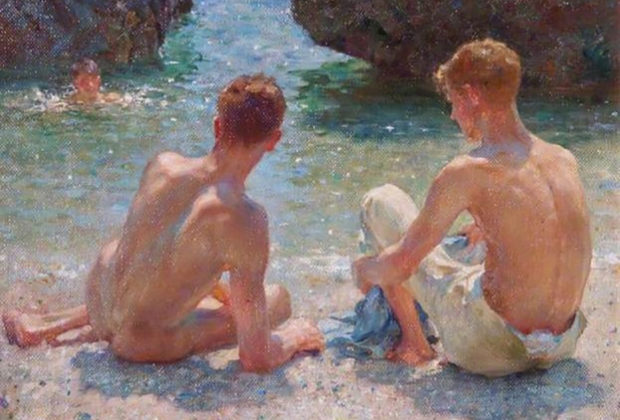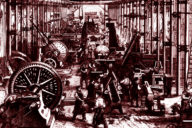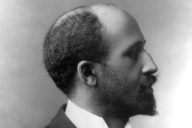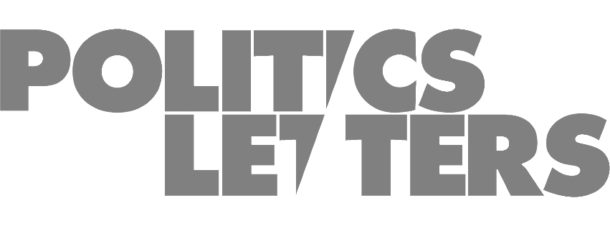When it comes to celebrating Pride, there’s no place like London. Even for this New York City resident, Pride in London approached unmatched sublimity through its simultaneously extensive and intense permeation of the entire city centre. Maybe it’s just that the streets of central London are more cramped and serpentine than downtown Manhattan, the birthplace of Pride, but the city felt crowded with bodies and businesses decked out in rainbow. The rainbow flag eschewed its conventional use of demarcating a business aimed at a specifically queer clientele. Instead, municipal and state-funded spaces joined private sector exemplars like Starbucks in proudly displaying the technicolor banner. At Piccadilly Circus station, one of Transport for London’s busiest hubs, escalators brought tube riders above ground through a rainbow-colored corridor. A couple miles south, a chain of triangular rainbow flags decorated the front gates of the United Kingdom’s premiere institution of British art, Tate Britain.
My experience of unexpectedly being in London during Pride was, in one respect, that of confronting staggering sameness: everywhere, iterations of the rainbow motif. At the same time, the people assembled together were remarkably heterogeneous. The familiar varieties of queer self-fashioning were present, but so were those who could be mistaken for any generic pub’s ostensibly heterosexual clientele. Flocks of drag queens and young women holding hands reveled alongside mixed-gender friend groups whose members didn’t obviously divide into gay or straight couples. Pride didn’t feel like an event a select demographic seeks out, but like an unavoidable city-wide celebration that absorbed everyone into an atmosphere at once respectably liberal and ecstatically carnival. Though officially set in the West End, where my friend and I met up that Saturday afternoon for tea and shopping, Pride followed us to the banks of the Thames as we arrived at Tate Britain to see the special exhibit Queer British Art, 1861-1967.
We’re both working on dissertations on Victorian sexuality, so when our respective research travels overlapped for one weekend in London, we knew we had to go to the Tate exhibit. What we didn’t know was that we scheduled our visit for the same day as London’s Pride celebration. Because of this lucky coincidence, my understanding of the exhibit was colored by its apparent collaboration in advocating for sexual freedom for both Britons and alien residents. As a surrogate for the nation, Tate Britain’s conspicuous use of LGBTQ paraphernalia claims the celebration of sexual diversity for British national identity. But how is this national identity delineated? The Soho Pride celebration appears to welcome everyone—at least, anyone who can successfully pass through British borders. But who is Queer British Art for?
As the exhibit’s subtitle signals, the nation-state sets the definitional parameters of Queer British Art; these parameters implicitly oppose queerness to obsolescent definitions of good citizenship. The exhibit, which closed October 1st, marks the 50th anniversary of the Sexual Offences Act, which partially decriminalized sodomy by legalizing consensual sex between men 21+. 106 years before, capital punishment was abolished for sodomitical offences, inaugurating a one hundred-year period in which same-sex erotic commitments couldn’t lead to death but could still result in imprisonment and/or social infamy. While historians of modern British sexuality tend to focus on a relatively coherent segment of this long historical arc, the breadth of Queer British Art captures how both rupture (the shadow cast by Oscar Wilde’s imprisonment) and continuity (the allure of working-class bodies) run through an epoch in which same-sex desire and gender non-conformity managed to flourish despite their criminality.
Given how ensconced in the popular imagination tragic anecdotes like actor John Gielgud’s arrest and Alan Turing’s chemical castration and subsequent suicide are, Queer British Art’s juxtaposition of stories of punishment with stories of possibility might seem surprising. Yet, unlike the unequivocally punitive 1885 Labouchere Amendment, under which Wilde and Turing were prosecuted, the 1861 legislation initiated a modest relaxation of penalties for homosexual activity. Because the threat conveyed by 1861 is more ambivalent than 1885, the title Queer British Art, 1861-1967 broadcasts that its galleries are going to tell us something about how to be creative—creating art, yes, but also community and sense of self—in a time where one’s erotic investments justified demotion to second-class citizenship. The exhibit’s eclectic range of materials fulfill the promise of its title. Arranged in rough chronological order, the galleries place paintings and photographs alongside artifacts which do not belong to the category of “visual art” as it’s conventionally defined but work to develop the exhibition’s interest in social and cultural history. Examples include Jimmy Slater’s pink wig (ca. 1950s) and souvenir photographs of Victorian cross-dressers and alleged (but not convicted) sodomites Ernest Boulton and Frederick Park alongside Angus McBean’s surrealist photographs and set designs; a copy of Walter Pater’s The Renaissance (1873) alongside Simeon Solomon’s treatment of neo-classical subjects in a Renaissance style; and, in the exhibit’s most startling and moving juxtaposition, Pennington’s portrait of Oscar Wilde alongside his door at Reading Gaol.
Instead of collecting together explicitly or intentionally queer objects, the exhibit focuses on teaching the visitor how to take up queer modes of looking. Queer British Art places the visitor into this role from the very start. Stepping into the first room, “Coded Desires,” felt little different from stepping into Tate Britain’s main galleries. The room greets the visitor with a palette and style synonymous with Victorian art: the large formats, soft yet variegated colors, and gentle lines of neo-classicism and the Pre-Raphaelites. Pater’s The Renaissance, the book of essays that would come to define the Aesthetic movement, sits in a glass case. Though Simeon Solomon and Wilhelm von Gloeden might gain more prominence here than they would in the displays upstairs—not least because von Gloeden was German—a visitor knowledgeable in British art would recognize the familiar names Frederick Leighton and Walter Crane.
Leighton and Crane are not only eminently British but insufficiently queer, as the exhibit acknowledges: Leighton’s sexuality is a mystery that invites speculation, while Crane was happily married. For this very reason, Leighton’s The Sluggard (1885) exemplifies the work that the combination of curatorial juxtapositions and individual museum labels do in transforming the Tate Britain visitor into a queer spectator. The Sluggard is part of the Tate’s permanent collection, but has been radically re-labeled.[1] Leighton’s bronze sculpture depicts a handsome youth jutting out one hip, flexing his biceps and craning his neck into a swan-like curve in order to loosen his muscles from the stiffness of slumber. Viewed through the context of curator Clare Barlow’s label, a technical exercise in representing the human form turns into an opportunity for admiring the nude male body and even for imagining a narrative context in which someone—perhaps even Leighton—might come across such a figure: rising from bed in an intimate space shared by both spectator and youth, perhaps after a tryst. Pausing to read the label, we receive Edmund Gosse’s description of the sculpture’s sensuous contours; a quote from Pater glorifying Renaissance man’s “‘reassertion of himself’” in claiming his own fleshly materiality; and an anecdote about Leighton taking inspiration from “Michelangelo’s dying slave.” The last anecdote justifies placing The Sluggard under Gosse and Pater’s respectively factual and hypothetical queer gazes because, according to Barlow’s label, Leighton’s sculpture “was executed at the very moment when Michelangelo’s own sexuality was beginning to be re-evaluated,” such as by Pater himself (39).
Accumulating such trivia is one of the pleasures of touring Queer British Art, but the curators’ conspicuously well-researched and somewhat idiosyncratic museum labels also signal something more fundamental about what’s so special about the exhibition experience. The exhibit’s labels multiply interpretive contexts in order to license viewing an object as an expression of or invitation to queer desire. Such contexts consist of an anecdote about how or why the artist created the work, an example of contemporary response (whether it be Gosse’s admiration or a critic’s censure), social or cultural context, and sometimes biographical facts or supposition. The biographical is never meant to justify a work’s inclusion, and the curators’ goal is obviously not to construct an identity-based canon of gay British artists; instead, the biographical works in tandem with other varieties of knowledge to attune the visitor to historically situated queer ways of close looking. Queer British Art not only teaches us a lot about social history—the policing of sodomy, Bloomsbury’s alternative domesticities, the vibrancy and grit of Soho’s sexual subcultures—but makes the visitor feel that knowledge with their own gaze. Seeing through Pater, we imagine a youth in the flesh, taking up a Michelangelo-inspired pose within Leighton’s studio to satisfy the artistic desires of the sculptor and stoke the erotic desires of Leighton’s contemporary viewers.
This eroticization of museum patronage finds its most streamlined form in Queer British Art’s consistent strategy of identifying the model and their relation to the artist instead of relegating the model to depersonalization. Angus McBean’s iconic portrait of Quentin Crisp (1941), on display in “Public Lives, Private Passions,” is an obvious choice for an exhibit called Queer British Art, given the well-known homosexuality of both photographer and subject. But McBean and Crisp aren’t only there to add to the roster of queer Britons, which isn’t even Queer British Art’s main objective. By noting that photographer and model were once lovers, the label for Angus McBean’s iconic portrait of Quentin Crisp (1941) requests that the spectator contemplate Crisp’s delicate features through the prism of desire and discover the erotic potential of viewing a male body via the highly artificial and even campy lighting and framing conventions of midcentury glamor photography. Crisp has been removed from his usual place as desexualized “other” in the British cultural imagination and instead becomes the visitor’s bedfellow in homosexual feeling. Through the previous “Theatrical Types” gallery, Queer British Art does important work in teaching viewers to recognize the features of the camp aesthetic and how it might express homosexuality, but with McBean’s close-up of Crisp, it also makes the viewer find that aesthetic sexy—if only for a moment.
Attuned to queer ways of looking, the visitor thus participates in the thoroughly social activity which Queer British Art takes to be foundational to the development of a nascent homosexual subculture. The exhibit tells many stories of how visual objects can acquire unintended or additional queer meaning when placed into queer hands. In the label for von Gloeden’s photographs of Sicilian youths (c. 1900), done up in a classical style, we come upon Edmund Gosse’s confession of his deliciously uncouth behavior of “peep[ing]…again and again” at the packet of von Gloeden photographs during Robert Browning’s funeral; the recipient of his confessional letter was the man who gave him the photos, the poet and self-identified invert John Addington Symonds (42). Christopher Wood’s Nude Boy in a Bedroom (1930), which depicts the undressed form of Wood’s lover Francis Rose from behind, was owned by actor Sir John Gielgud. Though the final gallery “Bacon and Hockney” presents two starkly different approaches to representing the body—abstraction and pop art, respectively—the artists’ work converges through a shared reference: physical culture. We learn of Francis Bacon’s participation in the gay consumption of body building magazines, a pop cultural form which David Hockney explicitly engaged in works such as Life Painting for a Diploma (1962). Bacon’s interest in masculine athleticism not only connects him to his contemporary but to earlier spectators and artists who similarly found queer possibilities in Michelangelo and Eadweard Muybridge, whose photographs of contorted and intertwined male bodies are reinterpreted in the lineaments of Bacon’s Figures in a Landscape (1956-7).
By emphasizing circulation, the curators enable visitors to take on the perspective of not just a hypothetical queer spectator but an actual one. The visitor to Queer British Art joins Bacon and Hockney in taking up a place in a transhistorical network literate in the homoerotic connotations of classicism and the Italian renaissance, the characteristics of camp, and gay appropriations of physical culture through which the queerness of British art comes into focus. The exhibit maps no obvious aesthetic narrative onto the loose progress narrative which characterizes its approach to social history; we receive no insight into why it makes sense that an exhibit which begins with associates of the pre-Raphaelites should end with pop art. Instead, Queer British Art emphasizes images and references which percolate in radically different socio-historical and art-historical contexts, providing a queer kind of continuity amidst significant historical shifts. This is my sense of what Queer British Art is for. But who exactly is Queer British Art for?
Like Pride in London, Queer British Art is or can be for anyone. The exhibit asks any visitor, no matter how they identify, to occupy the position of the queer spectator and even to tap into the erotic feelings which inflect the allegedly more clinical activity of interpreting British art. To borrow the terms of queer theorist Eve Kosofsky Sedgwick, queer sexuality becomes a “universalizing” as opposed to a “minoritizing” phenomenon: rather than being a property belonging to a discrete set of individual people and cordoning them off from another demographic with which they can never overlap, “queer” names an affective and bodily experience that can potentially be tapped into by anyone.[2]
However, perhaps unlike Pride, the exhibit is for anyone who is comfortable with inhabiting an understanding of sexual non-normativity largely if not exclusively defined by the erotic investments of white men. In some instances, this means fetishizing the working-class, foreign, and/or black; invariably, these bodies are male. When women’s stories do appear, they tend to be more discrete and isolated: examples include portraits of writers Radclyffe Hall and Vita Sackville-West (done by male artists); Evelyn de Morgan’s suggestively sadistic Aurora Triumphans (1877-8), featuring her close friend and possible lover as the model for the goddess of dawn; and a female nude from the bisexual Dora Carrington (1912). Though the curators have clearly done their best to include women, the clearest arguments Queer British Art develops unfortunately center on how men used visual representation to express their desires and forge bonds with the likeminded.
Though it provides anyone with the tools for inhabiting it, the vision of British queerness the Tate invites visitors to embody is finally a narrow one. Within its galleries, the allure of doing so is considerable, in part because of the insurgent pleasures of appropriating works from the hallowed rooms upstairs for the purposes of telling the history of perversion. Outside the museum, however, one faces the tensions which beset a multicultural city situated in a country unable to reach a common definition of the term at the center of Queer British Art: British. I loved going through this exhibit, and its anti-identitarian approach to telling the history of sexuality, its breadth of media and richly researched and gripping captions should serve as models for museums of all sorts. Queer British Art brings to life the pleasures and struggles of those implicated by the social and legal norms prohibiting same-sex activity, but in so doing it makes us question how much we want to take on the position of those whose legacies reflect Britain’s history of geopolitical domination, invidious racism and trenchant classism. The curator unapologetically points out these undercurrents, but maintaining critical distance is complicated by the exhibition’s frequent stoking of identification and attachment.
Reflecting on the general picture of Britishness it puts forward, I found the ambivalence of my own Anglophilia sharpened. But perhaps it makes a difference that Queer British Art commemorates an anniversary. Anniversaries highlight historical distance while also acknowledging that the past continues to shape our cultural self-understanding. The question Queer British Art raises is: to what extent? Has the vision of Britishness that underpins the exhibit’s vision of queerness survived, and will it continue to do so? The demographic heterogeneity on display at Pride in London suggests it won’t, or at least not in its entirety—there were a lot more women at Pride than there were on the walls of Queer British Art. But my visit overlapped not just with Pride but also with the one-month anniversary of a discombobulating general election that ended with Theresa May precariously holding onto power after a campaign that promised a hard Brexit. By virtue of its exclusions, Queer British Art stokes the desire for a British national identity that celebrates sexual diversity while also being ethnically diverse and responsive to other nationalities. It remains to be seen whether that desire, too, can be satisfied.
***
Victoria Wiet is a PhD candidate in English and Comparative Literature at Columbia University, where she specializes in Victorian literature, theatre history, and the history of sexuality. Her dissertation examines how the Victorian novel represents and provokes non-normative erotic experience by turning to the corporeal practices licensed by nineteenth-century theatre.
***
Notes
Barlow, Clare, ed. Queer British Art, 1861-1967. London: Tate Publishing, 2017.
[1] The original display caption explicitly desexualizes the statue by noting that “The fig leaf that hides the penis was a convention intended to neutralise any sexual appeal while the sculpture was on public display.” “The Sluggard,” Tate Britain, February 2010, http://www.tate.org.uk/art/artworks/leighton-the-sluggard-n01752
[2] Eve Kosofsky Sedgwick, Epistemology of the Closet (Berkeley: University of California Press, 2008), 82-85.







No Comments